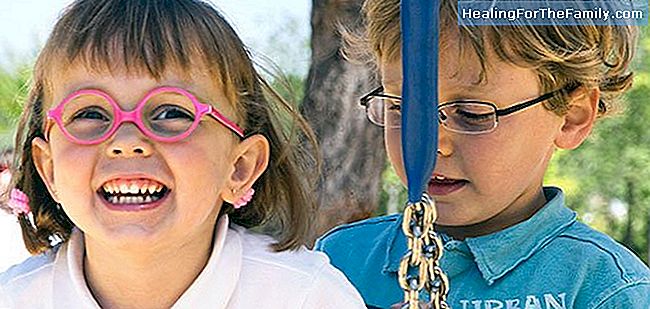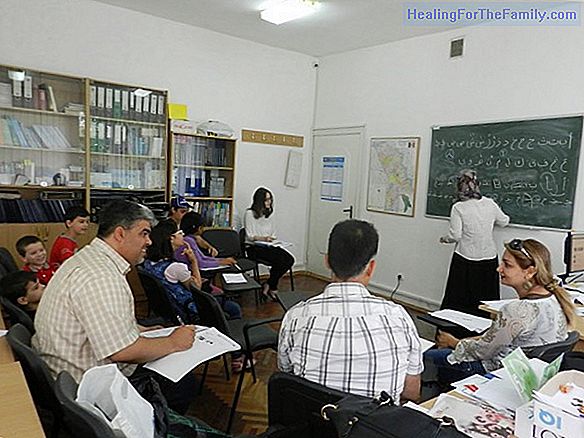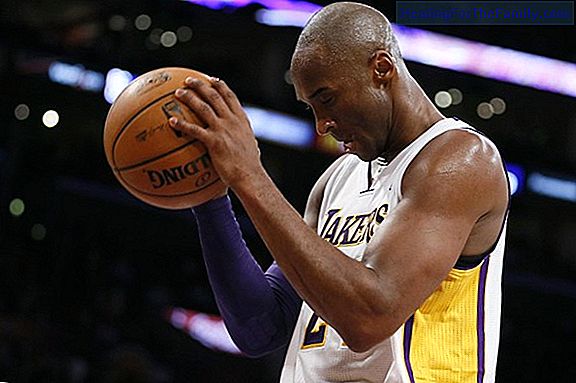Tips for choosing children's glasses
If we have already been told that our son needs glasses, the most normal thing is that we have some doubts. How should glasses be? Not all are the same. And not only the saddle changes, but also there are different types of crystals with very varied characteristics. For example, there are more or le
If we have already been told that our son needs glasses, the most normal thing is that we have some doubts. How should glasses be? Not all are the same. And not only the saddle changes, but also there are different types of crystals with very varied characteristics.
For example, there are more or less resistant frames, of different materials, and crystals with the ability to eliminate reflections, to prevent fogging ... Here are some tips for choosing your child's glasses.
What should be the frame of the child's glasses

Before choosing the frame of the glasses for our child, we must take into account:
- That they are the appropriate size for the child's face. They should not be too small or too big thinking about what will grow. The frame must have the right size that does not exceed the eyebrow or rest on the cheekbones, nor should they leave marks on the temple. The size of the eyes and the distance between them should also be taken into account. En - In general, gafas pasta glasses are usually recommended, because the material is more resistant
and gives the child more freedom. In the case of infants or very young children we recommend the use of silicone mounts , a lightweight and very flexible material that can withstand torsions and fits well with the factions of smaller children. For older children, or even for those who suffer from allergies to metals such as nickel, it is appropriate to use materials such as titanium , very light, resistant and hypoallergenic.-The rods of the frame must have an adequate length so that they do not remain very large or too short when we adapt them to the ear. Nor should press the temple, or leave a mark, or wounds behind the ear. To avoid this, they must reach the earlobe and it is recommended that they have soft terminals. Also, it would be convenient for the rods to carrya flexible system
to resist the possible bumps or pulls of the glasses without damaging it. - That the bridge of the saddle rests well on the child's nose . If we achieve that the mount sits well in the nose, the weight of it will be distributed better and will not leave marks. - If the child performs some type of sporting activity, we should choose a
sports line mount according to the activity he is going to do and only use for these moments (sports with ball or ball, contact sports like judo or karate , swimming, etc.)-
That you like the child . As long as you have the will to give your opinion (no matter how small), it is important to consider what you like because your success will be based on your being comfortable with them and feeling well. How to choose the glasses of children's glasses
- It is essential that they are organic lensesand, within them, of polycarbonate or a more reduced material, since polycarbonate is a material much more resistant to breakage than the normal organic lenses.
- If the child's grade is high, we recommend
choosing a lens as small as possible , not only for aesthetics but also for weight, image distortions (the thicker the lens, the more distortions it generates and the worse the quality of the image). -
That the lens covers the entire eye well to allow it to look where it looks, to do it through it. For this, the lenses must be well adjusted and centered, so that the optical center coincides with the center of the pupil of the child, since if this center does not exist, image quality will be lost (worsens up to 40%).-
That the lenses have anti-scratch and anti-reflective treatments . On the one hand, organic lenses have less resistance to scratching, so, especially in the case of children, it is important to wear this surface treatment that provides greater resistance to scratches. On the other hand, by putting a lens in front of the eye, many brightnesses are generated due to the reflection of light (both artificial and natural) in the lens. These brightnesses, like scratching, cause a decrease in contrast and image quality. An anti-reflective treatment eliminates most glitter. And, in this way, a more natural image is achieved with a more transparent and more aesthetic lens that avoids, in turn, possible discomfort in the eyes of the child. Elvira Jiménez
Optician-optometrist of ALAIN AFFLELOU and Master in Clinical Optometry. (Photograph by Alain Afflelou)












